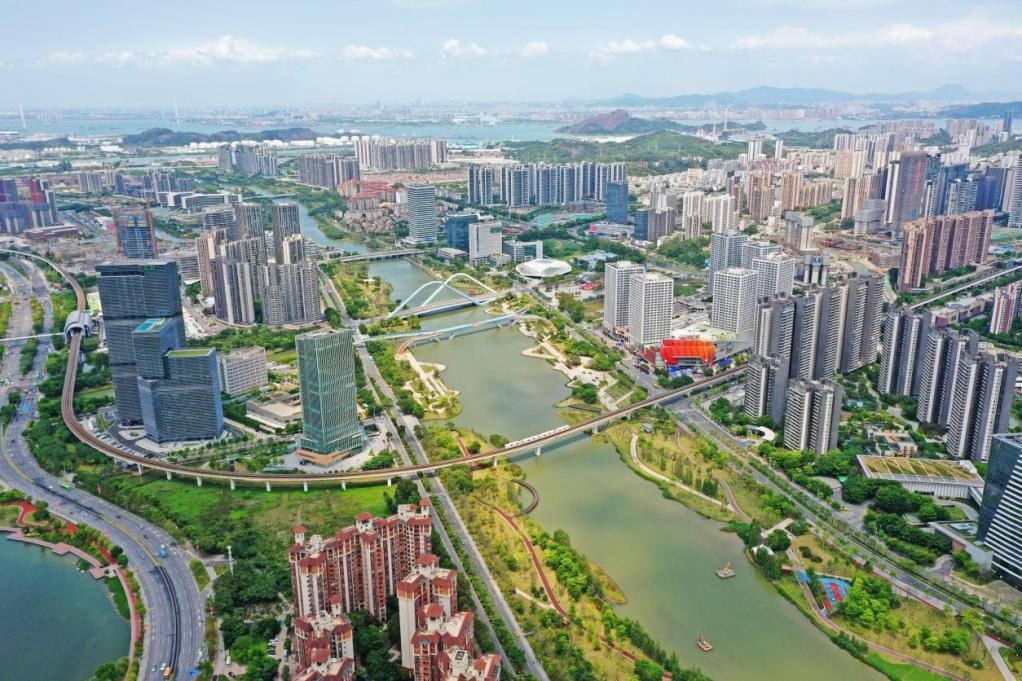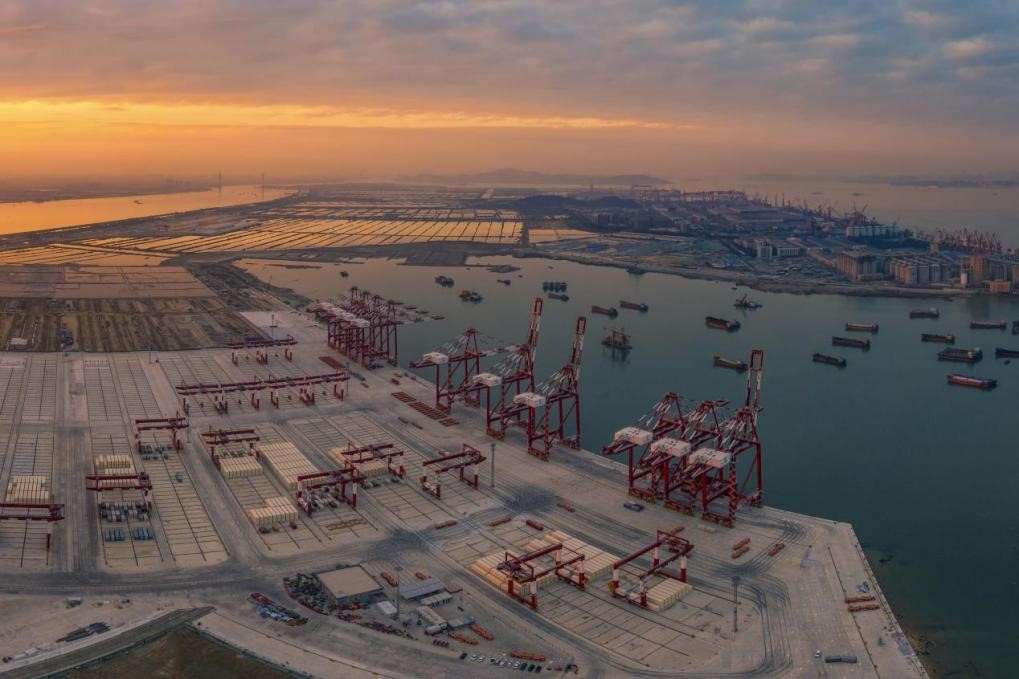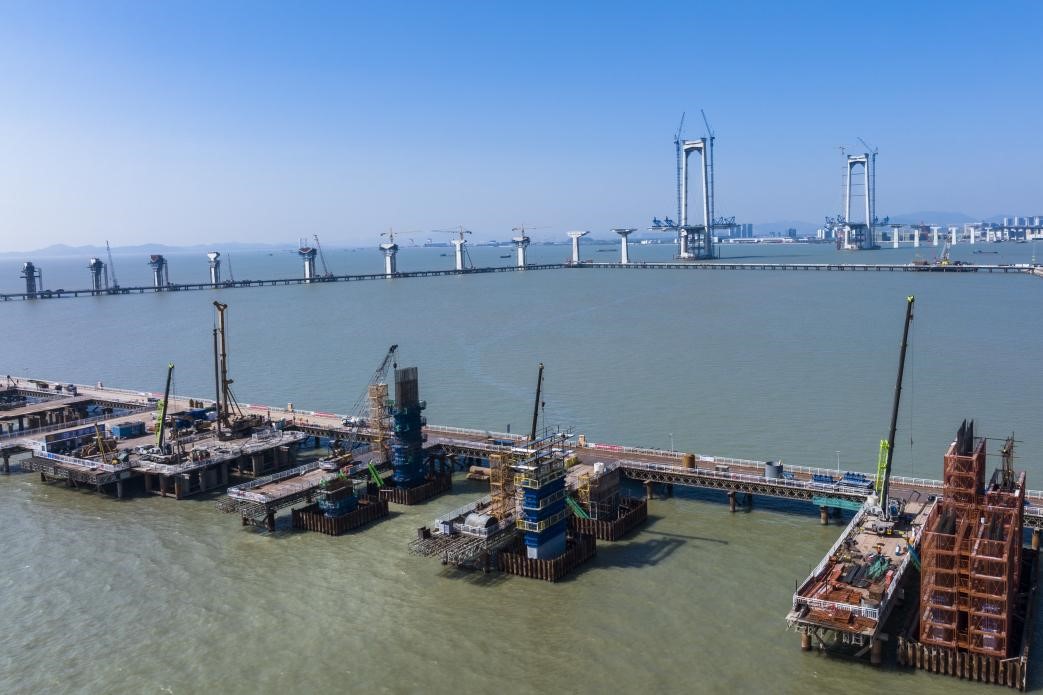Prominent phased progress has been achieved in the Guangdong-Hong Kong-Macao Greater Bay Area five years after the construction of the megalopolis started.

Photo shows the cityscape along the banks of the Jiaomen River, Nansha district of Guangzhou in the Greater Bay Area. (People's Daily Online/ Wang Guorong)
A number of policies have been rolled out and a series of infrastructure projects implemented in the Greater Bay Area, which has significantly enhanced the comprehensive strength of the region and brought much closer the cooperation between Guangdong, Hong Kong and Macao, providing more sense of fulfillment for the people living there.
A "one-hour living circle" is built in the Greater Bay Area thanks to the accelerated railway development.
The total operating mileage of railways in the Greater Bay Area reaches nearly 2,500 kilometers, including 1,430 kilometers of high-speed tracks, and 975 kilometers more are currently under construction.
The nine cities of the Greater Bay Area located in the Pearl River delta have built 476 kilometers of urban rail transit, and 12 more inter-city railway projects are underway, which are expected to stretch the total urban rail transit mileage by another 362 kilometers.
The total operating mileage of rail transit in the nine cities has reached 1,092 kilometers, and 662 kilometers more are under construction.
As of the end of 2021, the operating mileage of expressways in the Greater Bay Area had hit 4,972 kilometers, delivering a road network density of 9.1 kilometers per hundred square kilometers, which ranks among the highest in major city clusters both at home and abroad.

Photo taken on Dec. 7, 2021 shows the fourth-phase project of the Port of Nansha under the Guangdong Port Group, the first fully automated terminal in the Greater Bay Area. (People's Daily Online/Qiu Xinsheng)
In the Greater Bay Area, world-class airports and port clusters are taking shape. The airports in the area have a total passenger handling capacity of 200 million people, and the ports are able to handle over 80 million twenty-foot equivalent units.
At present, the four ports in Guangzhou, Shenzhen, Zhuhai and Dongguan have seen their cargo throughput exceeding 100 million tonnes. The Shenzhen Port and Guangzhou Port rank fourth and fifth globally in terms of the total volume of cargo discharged and loaded.
Rules and mechanisms of Guangdong, Hong Kong and Macao are being more and more connected, accelerating the establishment of a new system for open economy.
Guangdong has further shortened its negative lists for investment from Hong Kong and Macao, liberalizing the trade in services with the two special administrative regions (SARs). At present, enterprises from the two SARs enjoy national treatment when investing in legal, accounting and construction sectors in Guangdong. The southern Chinese province has also opened online business registration services for Hong Kong and Macao investors, which enables the latter to establish a company within a single workday.
Besides, the Guangdong-Macao In-Depth Cooperation Zone in Hengqin has launched cross-border business registration services, with which enterprises from Macao can set up offices in the cooperation zone without even actually going there.
As the Shenzhen-Hong Kong Stock Connect, the Southbound Scheme and the Cross-boundary Wealth Management Connect Scheme have been put into effect, RMB has become the largest cross-border settlement currency in the Greater Bay Area.
The number of mainland bank accounts opened by Hong Kong and Macao residents reached 180,000, and the residents in the Greater Bay Area are enjoying more convenient cross-border financial services.

The Shenzhen–Zhongshan Bridge to the south of Wangqingsha township, Nansha district, Guangzhou is under construction, April 3, 2022. It is another super structure after the Hong Kong-Zhuhai-Macao Bridge, and is expected to open to traffic in 2024. (People's Daily Online/Wei Jinsong)
At present, the Pearl River Delta is becoming an ideal destination for people from Hong Kong and Macao as it provides a sound business, working and living environment. It is building a closer bond between the residents of Guangdong and the two SARs.
Guangdong has already granted citizen treatment in livelihood area to Hong Kong and Macao residents. As of the end of 2021, 279,200 residents from the two SARs had registered for endowment, unemployment and work-related injury insurance in Guangdong.
The Macao New Neighborhood project implemented in the Guangdong-Macau In-depth Cooperation Zone in Hengqin is able to provide 4,000 apartments for Macao residents. The cooperation zone saw 503 registered employees from Macao as of the end of the last year, up 114 percent year on year.
The increasingly frequent employment exchanges between Guangdong and the two SARs are driving the flow of innovation factors. At present, there are more than 85,100 residents from Hong Kong and Macao that have registered for employment in Guangdong. Over 1,000 residents from Hong Kong and Macao have signed up for recruitment examinations held by mainland public institutions in the Greater Bay Area, and the first batch of the admitted have reported for duty.
Besides, Guangdong province is also planning to nurture 2,300 projects of youth innovation and entrepreneurship and attract more than 3,400 young residents from Hong Kong and Macao for work.
The province supports universities and scientific institutions in the two SARs to join the sci-tech schemes financed by the Guangdong provincial government. More than 10 Hong Kong and Macao universities and scientific institutions have benefited from it. As a result, a synergetic development model in the science industry has been built, under which the scientific achievements made by Hong Kong and Macao universities and scientific institutions are well translated in the Pearl River Delta.

